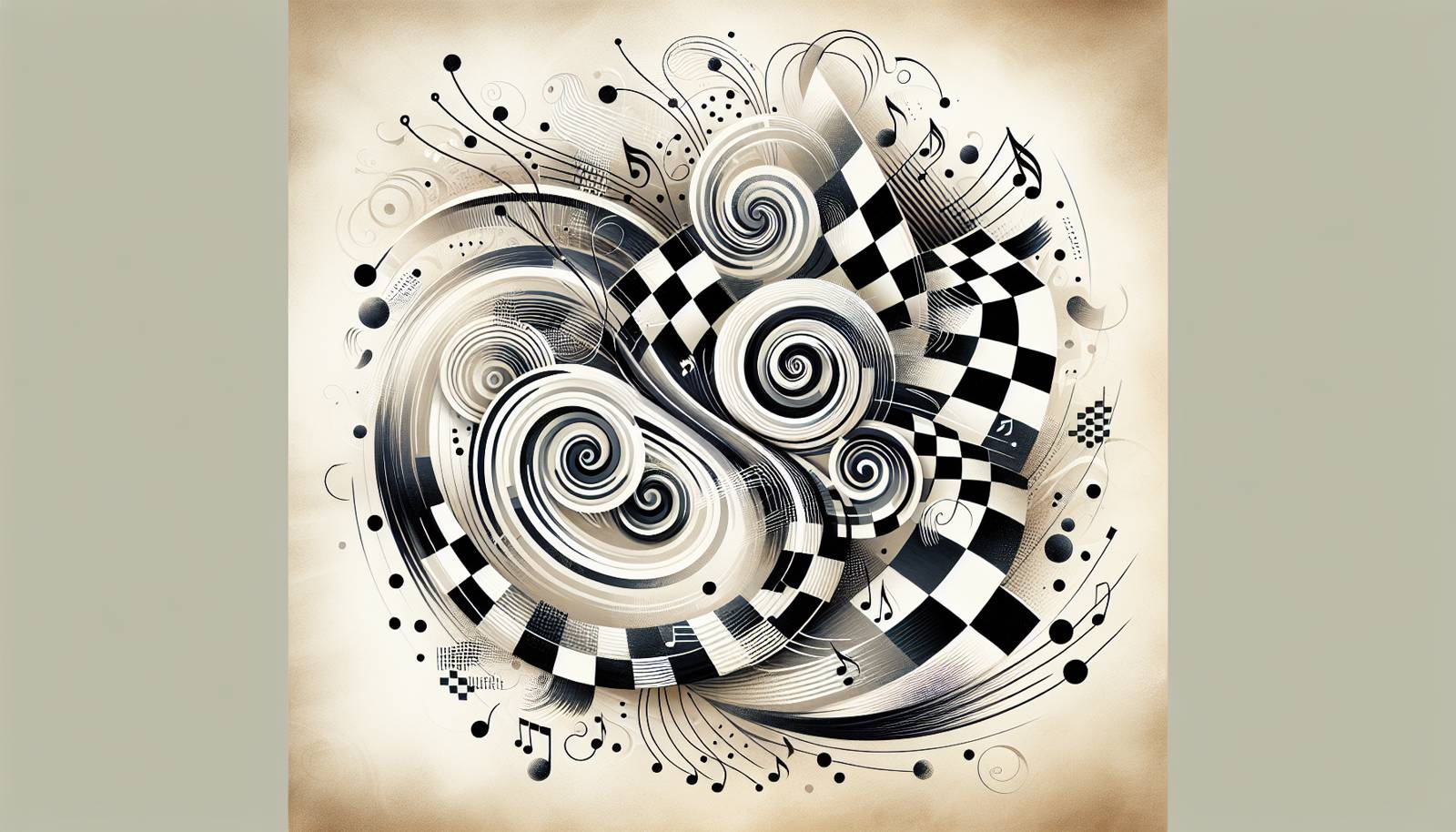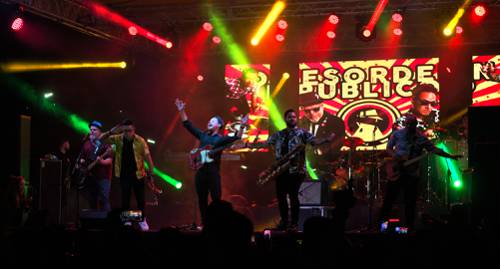
FAQ About The Impact of Ska Music on Global Culture

What is Ska music and where did it originate?
Ska is a music genre that originated in Jamaica in the late 1950s. It combines elements of Caribbean mento and calypso with American jazz and rhythm and blues. Ska was the precursor to rocksteady and reggae and is characterized by a walking bass line and rhythms on the offbeat.

How did Ska music spread to other parts of the world?
Ska music spread internationally during the 1960s, largely through Jamaican immigrants moving to the United Kingdom. The genre gained popularity in the UK, where it was embraced by the mod and skinhead subcultures. The Two Tone movement in the late 1970s further helped to bring Ska to a wider audience, blending punk rock influences with traditional Ska sounds, leading to a global resurgence.

What is the Two Tone movement in Ska music?
The Two Tone movement was a musical and cultural phenomenon in the late 1970s and early 1980s in the United Kingdom, named after the 2 Tone record label. It bridged the gap between punk rock and Ska, incorporating the high energy of punk with the rhythmic elements of traditional Ska. Bands like The Specials and Madness were central to the movement, promoting messages of racial unity and social commentary.

How did Ska music influence youth cultures and subcultures?
Ska music has been influential in various youth cultures due to its energetic rhythm and message of unity. In the UK, it was closely associated with the mod and skinhead subcultures, promoting an image of multiculturalism. In the United States, Ska found a home in the punk and alternative scenes during the 1980s and 1990s, known for its DIY ethos and inclusive community gatherings.

What role did Ska music play in the development of reggae?
Ska music was a precursor to reggae, laying the groundwork for what would become a globally recognized genre. As ska evolved, it slowed down into a style known as rocksteady, which eventually morphed into reggae. This progression was marked by a shift in tempo and the incorporation of more pronounced bass lines and socially conscious lyrics, elements that became central to reggae.

What are some notable Ska bands that have influenced global culture?
Several Ska bands have left a significant mark on global culture. The Skatalites, The Specials, and Madness are among the most influential. The Skatalites, originating from Jamaica, are credited with shaping the sound of early Ska and reggae. The Specials and Madness, part of the British Two Tone movement, helped reintroduce Ska to new generations worldwide by blending it with punk rock elements.

How has Ska music influenced modern genres?
Ska has had a notable influence on genres such as punk, reggae, and alternative rock. The genre's rhythmic offbeat patterns have been adapted by many punk bands, resulting in the fusion known as ska-punk. Additionally, ska’s emphasis on horns and percussion has influenced the development of genres like dancehall and dub.

What are some common themes found in Ska music lyrics?
Ska music often features themes of social justice, racial unity, love, and everyday life struggles. The genre's lyrics frequently address issues such as inequality and community solidarity, reflecting the social conditions of the times in which it developed. This focus on socially conscious messages has helped Ska maintain relevancy across various cultures.

Has Ska music experienced a resurgence in recent years?
Yes, Ska music has experienced periodic resurgences over the years, often coinciding with the rise of new bands and the globalization of music through digital platforms. In the late 1990s, Ska-punk bands such as No Doubt, The Mighty Mighty Bosstones, and Reel Big Fish brought Ska back into mainstream popularity, and it continues to have a dedicated following today.

What instruments are typically used in Ska music?
Ska music typically features a combination of brass instruments, such as trumpets and trombones, along with a strong rhythm section including drums, bass guitar, and rhythm guitar. The use of offbeat guitar chords and walking bass lines are key characteristics of the Ska sound. Keyboards and saxophones are also commonly used to add texture to the music.

What is Ska-punk and how is it different from traditional Ska?
Ska-punk is a fusion genre that combines elements of traditional Ska with punk rock. It is characterized by a faster tempo, a more aggressive sound, and often incorporates power chords and heavy guitars typical of punk music. While traditional Ska has a unique rhythmic emphasis on the offbeat, Ska-punk often blends this with the energetic and rebellious spirit of punk rock.

Who are some prominent artists in the Ska-punk scene?
Prominent artists in the Ska-punk scene include bands like Rancid, Less Than Jake, and Reel Big Fish. These bands have successfully blended the rhythm and brass elements of Ska with the fast-paced energy and often politicized lyrics of punk. They have gained significant followings and have contributed to the genre's popularity, particularly in the United States during the 1990s and early 2000s.

How did Ska music connect with the mod and skinhead subcultures?
Ska music became popular among the mod and skinhead subcultures in the UK during the 1960s and 70s due to its upbeat sound and multicultural roots. Mods, known for their stylish appearance, and skinheads, who originally embraced working-class pride and racial unity, both found a resonance with Ska's themes and rhythms. The music fostered a sense of community and unity among these groups.

What is the 3rd wave Ska movement?
The third wave Ska movement refers to the revival of Ska music that began in the late 1980s and reached its peak in the 1990s. This wave was characterized by a blend of Ska with other genres like punk and reggae, leading to new styles such as Ska-punk. It gained extensive popularity in the United States and was marked by the success of bands such as Sublime, No Doubt, and The Mighty Mighty Bosstones.

How does Ska music address themes of racial and social justice?
Ska music has long addressed themes of racial and social justice through its lyrics, which often focus on unity and equality. During the Two Tone movement, bands used their platforms to speak against racism and promote harmony between people of different backgrounds. This message resonated during periods of racial tension in the UK and continues to be relevant in global sociopolitical contexts today.

What is the impact of digital platforms on the popularity of Ska music?
Digital platforms have significantly impacted the popularity of Ska music by allowing bands to reach a global audience more easily. Streaming services and social media have helped both new and established Ska musicians distribute their work, connect with fans, and maintain community engagement. This accessibility has contributed to the genre's continued influence and its ability to reach younger audiences.

How do artists typically combine Ska with other musical genres?
Artists combine Ska with other musical genres by incorporating its characteristic offbeat rhythms and horn sections into different musical styles. This fusion can be seen in Ska-punk, where energetic punk rock guitar riffs and vocals are merged with Ska's rhythmic structure and use of brass. Similarly, in reggae and dub, Ska's influence is visible in the music's foundational bass lines and rhythmic patterns.

Why is Ska music considered important in the history of Jamaican music?
Ska music is considered an important part of Jamaican music history as it represents the first distinctly Jamaican genre to achieve international recognition. It laid the foundation for future genres like reggae and dancehall, helping to shape Jamaica's musical identity on the global stage. Ska also provided a voice for the social and political issues facing Jamaicans during its emergence, contributing to its lasting significance.

What cultural influences are present in Ska music?
Ska music incorporates a range of cultural influences, including Caribbean, African, and American musical traditions. The genre's rhythmic structure is deeply influenced by mento and calypso from the Caribbean, while its use of horn sections and jazz elements reflects African and American influences. This blend of cultures is part of what has made Ska so resonant and adaptable across different societies.

How does Ska music continue to influence modern music scenes?
Ska music continues to influence modern music scenes by serving as a foundation for new musical experiments and cross-genre collaborations. Contemporary artists and bands often draw from Ska's distinctive rhythms and brass instrumentation to create fresh sounds in genres such as indie rock, pop, and electronic music. Ska's enduring appeal and adaptability ensure its presence in modern music culture.
